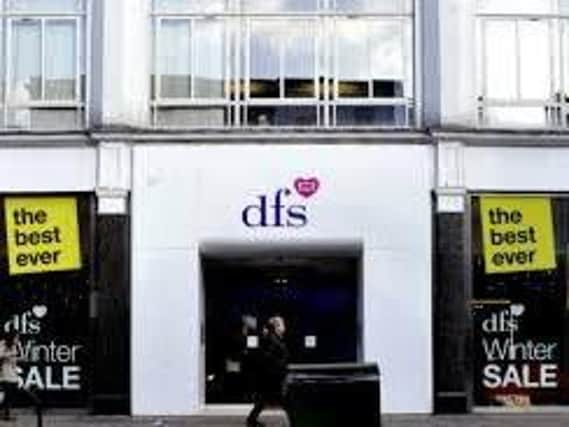High street suffers worst fall in five years


The latest BRC-Springboard footfall data shows that footfall fell 3.5 per cent in December, its biggest fall in nearly five years. The December monthly year-on-year figure was significantly below the three-month rolling average of minus 1.9 per cent and the twelve-month rolling average of minus 0.7 per cent.
A number of Yorkshire retailers are feeling the pain that has been caused by higher inflation since the pound slumped after the EU referendum, lower wage rises and increasing uncertainty about the economy.
Advertisement
Hide AdAdvertisement
Hide AdLast week shares in budget greetings car retailer Card Factory collapsed after it said profits will come in lower as it faces a margin squeeze. The Wakefield-based firm said next year’s trading will be hit by the weak pound and wage inflation, which will see it book an extra £7m to £8m in costs.
Last month double glazing firm Safestyle said trading will be very challenging this year. The Bradford-based firm has blamed a combination of Brexit uncertainty and rising inflation and it now expects 2017 full year underlying pre-tax profit to come in below market expectations.
Another casualty is sofa chain DFS Furniture, which said profits have taken a tumble as consumers rein in spending on big ticket items amid the stalling economy, a fall in confidence and the collapse in the pound.
The Doncaster-based group said pre-tax profits fell 22 per cent to £50m in the year to July 29.
Advertisement
Hide AdAdvertisement
Hide AdLaith Khalaf, senior analyst at Hargreaves Lansdown, said DFS has been hit by a double whammy of slowing consumer demand and rising costs, stemming from the weaker pound.
The latest BRC-Springboard data, which is out today, showed that all regions showed a drop in footfall in December, the sharpest reductions being experienced by the South West (down 5.2 per cent) Scotland (down 4.7 per cent), and Greater London (down 3.7 per cent).
Yorkshire performed better than the national average with a fall of 3.2 per cent.
High streets and retail parks both saw a decline of 3.1 per cent, while footfall in shopping centres decreased by 3.2 per cent.
Advertisement
Hide AdAdvertisement
Hide AdHelen Dickinson, chief executive of the British Retail Consortium, said: “The sharp drop in footfall this December, while sales grew overall, underlines how shopping is being transformed by the shift to online.
“In the past, shoppers would have exclusively visited physical stores to ensure stockings were filled for Christmas. Improved delivery options by both purely digital retailers and those with stores and an online offer mean many purchases of last minute gifts are moving online.
“The squeeze on discretionary spending also contributed to the decline in footfall. Households had to use their money more carefully, researching products online, rather than heading out to stores to browse.“
Retail parks fared slightly better than high streets by providing Christmas shoppers with the convenience of parking, easy click-and-collect, and leisure facilities.
Advertisement
Hide AdAdvertisement
Hide AdDiane Wehrle, Springboard‘s Marketing and Insights director, said: “The drop in footfall of minus 3.3 per cent in the weeks leading up to Christmas provided a heads up for December, with the final outcome of minus 3.5 per cent of little surprise.
“This is a significant weakening in performance from December 2016 when footfall in retail destinations dropped by just 0.2 per cent, and it is the worst result for any month since March 2013.“
She said high streets and shopping centres struggled to attract customers more than retail parks.
“The resilience of retail parks reflects the rise in online activity in December, which drives click and collect trips, and the better trading performance of food stores versus non-food retailers,” said Ms Wehrle.
Advertisement
Hide AdAdvertisement
Hide Ad“The poor non-food like-for-like in-store sales growth clearly reflects the more severe drop in footfall during retail trading hours in December.
“Shops are losing footfall more quickly than wider retail locations and so have a declining customer base.
“Moving forward into 2018, it is apparent that retailers need to focus on maximising conversion via the core deliverable of best product and customer service with an improved in-store experience, whilst holding their nerve and resisting discounting too early and so protecting margin.”